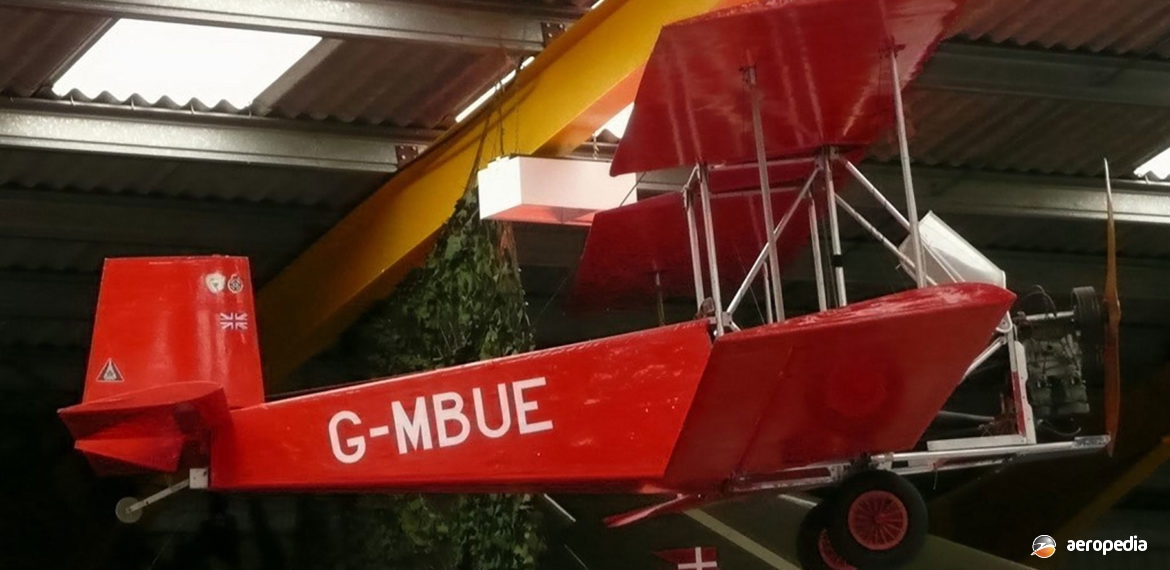Photograph:
Super Tiger Cub G-MBUE (c/n MBA-001) on display at the Newark Air Museum in the United Kingdom in 2012 (David C Eyre)
Country of origin:
United Kingdom
Description:
Single-seat ultralight sport biplane
Power Plant:
One 37 kw (50 hp) Fuji Robin EC44PM two-cylinder, two-stroke inverted air-cooled engine
Specifications:
- Wingspan: 6.40 m (21 ft 0 in)
- Length: 4.05 m (13 ft 3 in)
- Height: 1.68 m (5 ft 5 in)
- Wing area: 12.6 m² (136 sq ft)
- Never exceed speed: 137 km/h (85 mph)
- Max speed: 129 km/h (80 mph)
- Max cruising speed: 113 km/h (70 mph)
- Economical cruising speed: 97 km/h (60 mph)
- Stalling speed: 48 km/h (30 mph)
- Max rate of climb at sea level: 274 m/min (900 ft/min)
- Minimum sink rate at 58 km/h (36 mph): 152 m/min (500 ft/min)
- Take-off distance on grass: 20 m (60 ft)
- Landing distance on grass: 25 m (80 ft)
- Service ceiling: 3,048 m (10,000 ft)
- Range at cruising speed: 185 km (115 miles)
- Fuel capacity: 22.7 litres (5 Imp gals)
- Empty weight: 120 kg (265 lb)
- Payload: 107 kg (235 lb)
- Loaded weight: 227 kg (500 lb)
History:
With the growth of the ultralight movement in the 1980s, a number of people around the world commenced to design and build various forms of ultralight aircraft but many suffered from the lack of a suitable engine. An unusual aircraft was built by Micro Biplane Aviation (MBA) of Worksop in the United Kingdom which produced the prototype of the Tiger Cub 440 (G-MBUE – c/n 001). This aircraft was completed in 1982 and placed on the British Civil Aircraft register in that year. Amongst its unusual features was alloy tube construction joined at 90-degrees by metal fixtures, the wing struts being built in that fashion.
Power plant was the popular, at the time, Fuji Robin EC44PM series, a two-cylinder, two-stroke unit with three toothed V-belts running from the crankshaft pulley at the front of the engine to a larger drum which was connected to a two-blade propeller. In the United Kingdom it was classed as a microlight. The wings could be folded back against the fuselage for hangarage or placement on a trailer.
The aircraft was built in some numbers and a few examples have been preserved in museums in the United Kingdom. At least one example was imported to New Zealand in about 1986 but it is not known to have been completed and flown.

